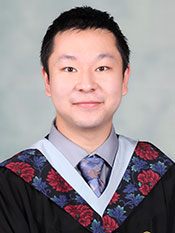Program Information
Development of a Motion-Robust 4D-MRI Technique Based On a Golden-Ratio Optimized Sparse Acquisition and Spatiotemporal-Constrained Sorting
C Wang*, F Yin , Z Chang , J Cai , Duke University Medical Center, Durham, NC
Presentations
MO-AB-FS4-9 (Monday, July 31, 2017) 7:30 AM - 9:30 AM Room: Four Seasons 4
Purpose: To develop a motion-robust 4D-MRI technique through the integration of a golden-ratio optimized sparse acquisition and spatiotemporal-constrained sorting.
Methods: This method has two main components: 1) a 3D gradient-echo(GRE) sequence on Cartesian grid with sparse acquisition regulated by a golden-ratio optimized 64-ray profile on the phase-encoding ky-kz plane, and 2) a spatiotemporal-constrained sorting for image reconstruction to minimize breathing variation induced motion artifacts. Respiratory signal is derived from the 1D-Fourier transform of k-space center. A spatiotemporal index(STI), which describes the spatiotemporal relationship of k-space data to patient’s average breathing cycle, is calculated per frequency-encoded kx acquisition as a function of k-space sampling density to guide the sorting. 4D-MRI images are reconstructed from the sorted data using an iterative 2nd-order total generalized variation(TGV) method. The proposed method was evaluated and compared with the conventional phase-based sorting method using a dynamic digital phantom. Six motion scenarios were simulated, including 2 cosine curves with different amplitudes and 4 patient breathing curves. K-space acquisition was simulated every 4.3ms. Total relative error(TRE) and Dice similarity coefficients(DSC) of GTV in reference to the ground-truth 4D-MRI were computed.
Results: For cosine motion with large amplitude(3cmAP/2cmSI), the new 4D-MRI technique resulted in an average TRE of 0.034 and DSCs of 0.96/0.96 for GTV at EOE/EOI. In contrast, these values were 0.067 and 0.96/0.89 for the conventional method. For patient breathing motions, the average TRE and DSC results from the proposed method were 0.030 and 0.94/0.93 at EOE/EOI, which were better than the ones (TRE=0.055, DSCs=0.87/0.87 at EOE/EOI) from conventional phase-based sorting with superior image quality
Conclusion: Preliminary results suggested the proposed 4D-MRI technique is able to generate 4D-MRI images that are nearly free of irregular breathing induced motion artifacts, holding great promises for more accurate determination of moving target volume than current 4D-MRI techniques.
Contact Email:
